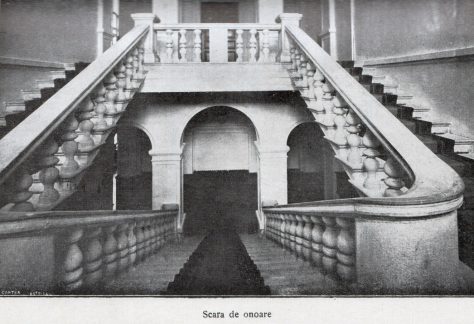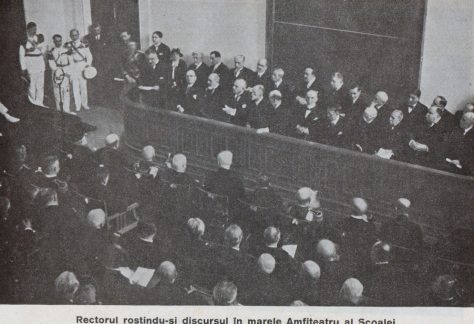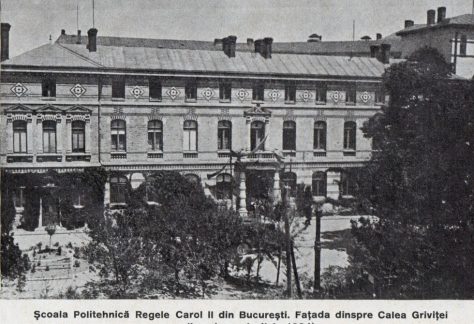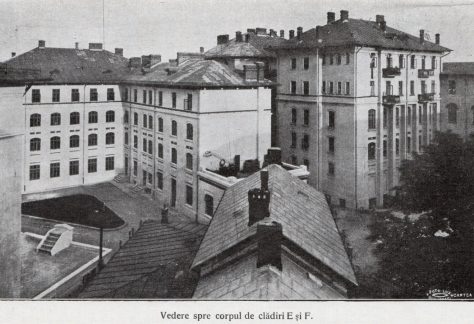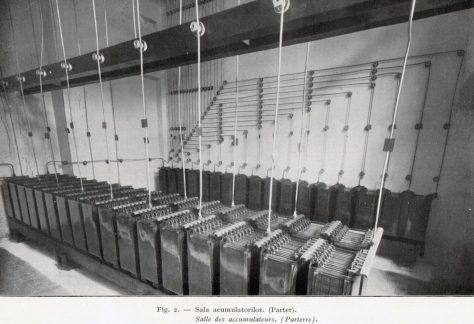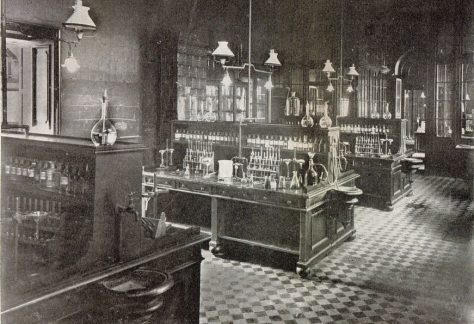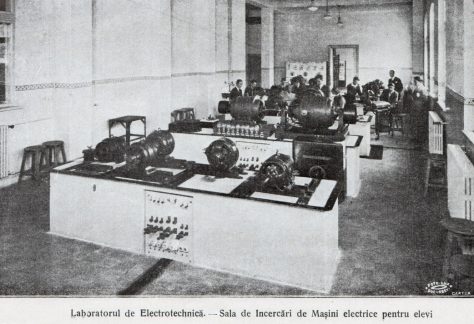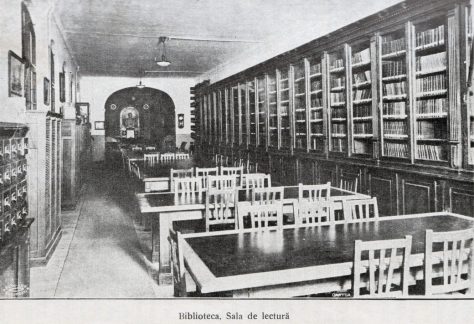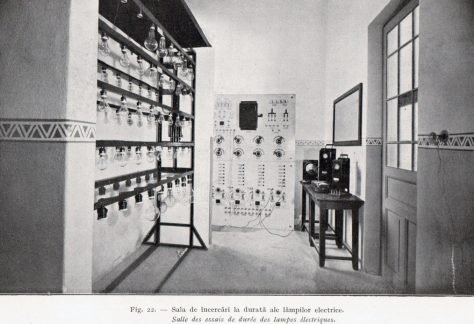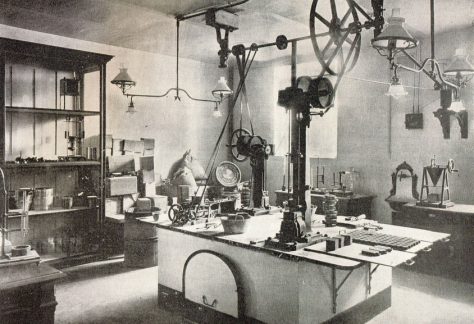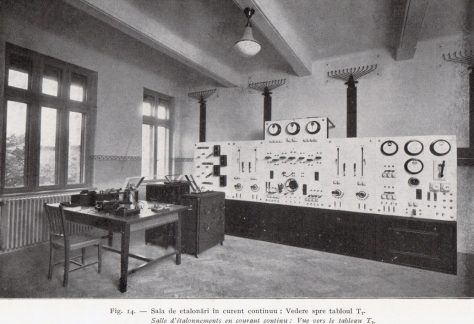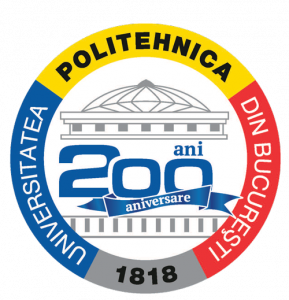
In the next period, the University Politehnica of Bucharest will celebrate its bicentenary with a remarkable series of events – from symposiums to shows, from exhibitions to scientific events, all focusing on telling the story of the largest technical university in Romania.
On the verge of these two centuries, our university is full of energy, enthusiasm and confidence in the future – but more than anything we begin to feel all the great potential of our academic community and the need for a common goal – such a strong desire that it began to define the very objectives of our university.
That is why all the events that will take place this year and the next academic year will focus on issues with economic and technological impact, and ways of ensuring our university can have a positive impact on society through knowledge. This whole series of events will be an expression of our leading regional role in research, technology and training of highly specialized engineers.
1818
The traditions of higher technical education are related to the establishment in 1818 by Gheorghe Lazãr of the first courses of engineers from Wallachia with teaching in Romanian at the Academic School for Philosophy and Mathematical Sciences at St. Sava Abbey in Bucharest.
1850
Through the decree no. 1389 of 17th October, the ruler of Wallachia, Barbu Dimitrie Ştirbei, approved a three-step learning programme: primary, college and special. For the special education, the decree stipulate a “law school for those who want to embrace the judicial career or similar professions; a sciences faculty, divided into three sections, for topographers, bridge and road engineers, and for architects, an agricultural and economics school, and a craft school.”
1864
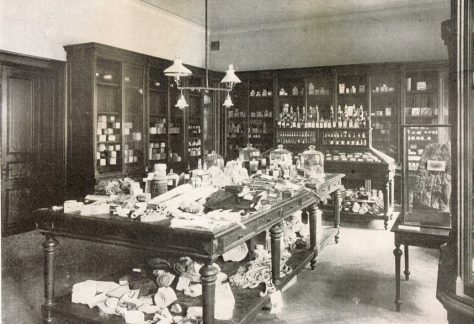
1881
Through the decree no. 1035 of 8th April 1881, the engineer Gheorghe Duca was appointed as a director of the School of Bridges and Roads of Bucharest. The new director established a serious rigor and discipline in school.
1886
On 2nd October 1886, the new site of the National School of Bridges and Roads on Calea Griviţei street was inaugurated. This site comprised of building A (ground and first floor) with a surface of 7,130 m² and building K (Gaiser and sheds) having a surface of 970 m². In the project plans for the National School of Bridges and Roads, drafted in Paris and signed by the French architects Lecomte du Noüy and Cassien Bernard on 26th December 1884, there is also the Museum and Collection Hall, located in the building A.
1890
Through the decree no. 3124 of 15th November 1890, the graduates of the National School of Bridges and Roads have been granted the right to be admitted to the Technical Corps with the rank of Engineers Grade III and the Commission of the National School of Bridges and Roads has been established, which examined if the graduates of the foreign technical schools have equivalent diplomas with our school, which has been defined as a measure of the superior technical knowledge of the future engineers of the State
1920
As a result of the report of the management and opinions of the teaching council of the National School of Bridges and Roads, the decree no. 2521 of 10th June 1920 was approving the establishment and organization of polytechnic schools in Romania, designed as higher education institutions similar to universities, aimed at training engineers and subordinated to the the Ministry of Public Works. Article 2 states that the first polytechnic school is established by transforming the current National School of Bridges and Roads which will become the Polytechnic School of Bucharest.
1927
In 1927 the Industrial Museum of the Polytechnic School of Bucharest opens. School collections consisted of donations and items purchased from school funds. This museum was opened for public until 1948, when it was destroyed by a fire.
1938
In 1938 the Faculty of Industrial Chemistry was established, following the transition of the Institute of Industrial Chemistry from the Faculty of Sciences of the University of Bucharest at Politehnica of Bucharest. In Politehnica of Bucharest there are five faculties: Industrial Chemistry, Construction, Mechanics and Electricity, Mining and Metallurgy, Forestry.
1948
On 3rd August 1948, the Presidium of the Great National Assembly of the Romanian People’s Republic issued the decree no. 175 for education reform. According to this decree, “public education is an equal right for all citizens of the Romanian People’s Republic, irrespective of gender, nationality, race or religion. It is organized exclusively by the state and is based on democratic, popular and scientific principles and it is a secular education system.” Through a series of normative acts (decrees, ministerial decisions), measures were taken regarding the organization of education of all levels. The Politehnica of Bucharest became the Polytechnic Institute of Bucharest with the following faculties: Industrial Chemistry, Electrotechnics, Mechanics, and Textiles. Faculty of Civil Engineering, Forestry, Agronomy, Architecture, the department of Mines of the Faculty of Mine and Metallurgy, the department of Petroleum of the Faculty of Industrial Chemistry, existing before 1948 in the Politehnica of Bucharest.
1951
The Decision of the Council of Ministers no. 1056 of 2nd October 1951 establishes the higher education institutions with their sections and departments that will function from the 1951-1952 school year. Faculty of Electrical Engineering (duration of studies 5 years), Faculty of Power Engineering (duration of studies 5 ½ years), Faculty of Mechanics (duration of studies 5 years), Faculty of Industrial Chemistry (duration of studies 5 years), Faculty of Metallurgy (duration of studies 5 years), Faculty of Economics Engineers (duration of studies 4 years). The same Decree transforms the Textile Faculty, which functioned until this year at the Polytechnic Institute of Bucharest, into the Institute of Light Industry based at the Iasi University Center.
1953
By Order of the Minister of Education no. 5108/1953 In addition to the existing faculties, the following faculties are established at the Polytechnic Institute of Bucharest: Faculty of Electronics and Telecommunications (duration of studies 5 years), Faculty of Machinery Construction (duration of studies 5 years) and Labour Faculty: Section A (Mathematics, Physics, Chemistry).
1969
On 21st July 1969, the first educational spaces were put into use in the location at 313 Splaiul Independentei, namely: the NB building of the General Education section with an area of 11,445 m² comprising of 2 auditoriums of 175 seats each, 16 seminar rooms with 480 seats, 15 drawing rooms with 450 seats and the laboratories of the departments of physics, mechanics, organization and management of enterprises – with a total surface of 1960 m² -, the household group with a total surface of 3300 m² comprising of maintenance workshops and warehouses.
1981
For the school year 1980-1981, the school plan was approved for: Faculty of Car Manufacturing, Faculty of Mechanics, Faculty of Agricultural Mechanics, Faculty of Aeronautics, Faculty of Transportation, Faculty of Metallurgy, Faculty of Electrotechnics, Faculty of Electronics and Telecommunications, Faculty of Automatic Control, Faculty of Power Engineering, National Institute of Chemistry, Bucharest with the Faculty of Chemical Technology and Faculty of Machinery and Chemical Process Engineering.
In November 1992, based on Senate resolution, the Polytechnic Institute of Bucharest became University POLITEHNICA of Bucharest. Today, University POLITEHNICA of Bucharest has 15 faculties and over 30,000 students.


